Ommadawn
Release Date: October 21, 1975
Location: The Beacon, African drums at The Manor
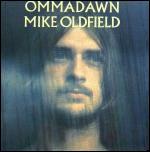
1. Part One 19:14
2. Part Two 17:17
|
Mike Oldfield: harp, electric, acoustic, classical and twelve-string guitars, acoustic and electric basses, mandolin, bodhran, bazouki, banjo, spinet, grand piano, electric organs, synthesizers, glockenspiel, assorted percussion.
Paddy Moloney: uillean pipes.
Herbie: northumbrian bagpipes (credited, but removed from final album).
Leslie Penning: recorders.
Terry Oldfield: pan pipes.
Pierre Moerlen: timpani.
David Strange: cello.
Don Blakeson: trumpet.
William Murray: percussion.
Julian Bahula, Ernest Mothle, Lucky Ranku, Eddie Tatane (Jabula): African drums.
Clodagh Simonds, Bridget St John, Sally Oldfield, The Penrhos Kids (Jason, Abigail, Ivan and Briony Griffiths): vocals.
The Hereford City Band conducted by Leslie Penning.
Produced and Engineered by Mike Oldfield and Phil Newell
Recorded at The Beacon January - September 1975. African drums recorded at The Manor.
Cover photograph by David Bailey
Picture of the instruments
Picture of the musicians
|
Notes
Though Mike had recorded some demos for Hergest Ridge in The Beacon, Ommadawn was the only album which he recorded there. Equipment was brought in from the Manor Mobile, enabling him to work on the album without the pressures of fitting his schedule around studio bookings.
While recording Ommadawn, Mike began having problems with the recording tape. Changes to tape formulations in the 1970s left them prone to absorbing moisture from the atmosphere, leading to the oxide beginning to fall off and the tape losing the information recorded to it. While in most cases, it's taken years for this problem (known as sticky shed syndrome) to become apparent, it seems that Mike - possibly because of damp conditions at The Beacon, along with his use of multiple overdubs - was an early victim of it. The master tape began shedding oxide while he was still recording the album, eventually leading to him taking the decision to start again. The original recording surfaced again in 2010, as the "Ommadawn (lost version)" on Universal's Deluxe Edition re-release of the album. Fragments of it had previously only been heard in the interview with Mike in Tony Palmer's 1976 documentary series All You Need Is Love (in the episode Imagine: New Directions) and in the 1977 film Reflection.
The ending song, usually called On Horseback (though referred to on the original album merely as 'the horse song') was inspired by Mike's experience of riding horses on Hergest Ridge. He had been introduced to horseriding by Les Penning, and Les recalled in a 2013 interview how they used to borrow horses from a local resident called Harold Jones:
"I knew Harold, and we decided we’d like to borrow a couple of horses from Harold one day. So we did, they were docile old things, and Harold lived just near Hergest, ‘cause I lived, you know, half a mile from Hergest Ridge really. So, we just rode the horses up the bank, over the road, and we’d go up to the ridge. We did that quite often, and that was in the Ommadawn year. Wasn’t all plain sailing...occasionally fell off. Foot stuck in the stirrups and got dragged along the ground. Yeah, not very nice. There’s a bit of license in that song, I think, somewhere. I’d rather be with you...I’d rather be in the pub, I think!"
According to Les, though most of Herbie's Northumbrian Bagpipes were removed from the album, one note remains, starting at roughly 6:52 in Ommadawn Part Two; the drone in the preceding section likely belong to Herbie's pipes as well. Some of his playing can now also be heard on the end of the 'Lost Version'.
The inner sleeve of the Ommadawn LP featured a picture of many of the musicians featured on the album, taken in the grounds of The Manor by David Bailey. For those coming from Kington in a light aircraft owned by Martin Griffiths from Penrhos Court, the journey wasn't entirely uneventful, as Les Penning recalled:
"We flew from Shobdon to Kidlington Airport for the photograph at the Manor. It was Martin flying, Michael in the front, me, and one of Martin’s daughters behind me in the plane. That was fair enough, that was quite a nice journey, until we came over Kidlington airport and Michael had the controls...never had the controls before and...having the controls amounted to sitting there with a rigid look on the face going [pulls a frightened face, hands out in front of him as if grabbing controls]. So we almost overflew Kidlington Airport, until Martin spotted it, so we immediately nosedive into Kidlington Airport, whereupon the daughter’s...breakfast left her. Urghhhh. So, we arrived there slightly out of kilter, really, bespattered. [chuckles] Poor girl."
As well as being mixed in stereo at The Beacon, the album was mixed in quad (four channel surround) a few weeks later at The Manor, both times with Mike and Phil Newell at the desk. The quad version was released both in CBS's SQ format (QV2043) and Sansui QS (QVQS2043) - the mix is the same, but the differences in the two formats lead to the two LPs sounding different when played in stereo. The SQ version was also released as part of Boxed, which also made it onto CD.
[Les Penning quotes are from an interview by Richard Carter and Tim Unwin in January 2013, with thanks to David Porter for the initital contact]
Personnel
| ▸ | Philip Newell (producer) | | An experienced live and studio engineer, Philip joined Virgin to help set up The Manor. He became Virgin Records' technical director and was also responsible for the Manor Mobile recording truck. He now concentrates on acoustics consultancy and recording studio design. Also appears in: Exposed
| | ▸ | The Hereford City Band (ensemble) | | According to Mike's autobiography, Changeling, he was put in touch with the Hereford City Band by Simon Draper at Virgin, after Mike had said he wanted a brass band on the album. They were, according to Les Penning, recorded in the upstairs living room of The Beacon, with Les conducting and listening to the music over headphones, while Mike sat in the control room downstairs.
| | ▸ | Jabula (ensemble) | | Meaning 'Happiness' in Zulu, Jabula was an afro jazz band formed in 1974 by musicians who'd left apartheid-era South Africa and settled in London. They signed to Virgin to make their eponymous debut album, released in 1975, and it was Virgin's Simon Draper who introduced them to Mike. Also appears in: Incantations
| | ▸ | Herbie (musician) | | Chris Herbert, a musician who lived in Kington. Herbie's playing was eventually replaced by Paddy Moloney's after Mike wasn't happy with the results. He died in 2012. Though Herbie's pipes mostly weren't used on the final album, Les Penning has said that a single note of Herbie's playing remains, in the section immediately preceeding the Paddy Moloney section of Part Two.
| | ▸ | The Penrhos Kids (musician) | | Jason, Ivan, Abigail and Briony Griffiths. Children of the owners of the Penrhos Court Hotel near Kington, where Mike often played music with Les Penning while he was working on Ommadawn. The Penrhos Kids appear on the song 'On Horseback' at the end of the album.
Also appears in: Return To Ommadawn
| | ▸ | Julian Bahula (musician) | | The leader of Jabula, he came to fame in the 60s in South Africa playing in 'The Molombo Jazzmen' (later to be shortened to Malombo) led by Philip Tabane. He moved to London with the band Jo'burg Hawk, a group of both black and white South Africans who weren't allowed to play together in their homeland. Though he was not keen on doing sessions for other artists, he made three exceptions - Mike Oldfield, Stevie Wonder and Dick Heckstall-Smith. Also appears in: Amarok
| | ▸ | Don Blakeson (musician) | | A session trumpet player, Don played with the London Jazz Orchestra in 1963 when they made a recording entitled 'Stonehenge'. Also produced an arrangement of Händel's Fireworks music for brass band.
| | ▸ | Pierre Moerlen (musician) | | Drummer with (and later leader of) the prog-rock group Gong. Mike would have met Gong while he was at The Manor recording Tubular Bells at the same time as they were recording their 'Flying Teapot' album (another of Virgin records' early releases). Mike made a guest appearance on Gong's LP 'Downwind'. He died unepectdly of natural causes in 2005. Also appears in: Incantations, Exposed, Platinum, Islands
| | ▸ | Paddy Moloney (musician) | | Leader of Irish folk group 'The Chieftains', which Paddy formed in 1963. Most famously, the group featured on the soundtrack to the Stanley Kubrick film 'Barry Lyndon'. Also appears in: Five Miles Out, Amarok
|
| | ▸ | Ernest Mothle (musician) | | Jabula's bassist, Ernest also played double bass with Robert Wyatt (who was one of the members of 'The Whole World', Kevin Ayers' band that Mike Oldfield was a part of) and many other artists. He also appeared in an episode of the British sci-fi series Dr Who, in Season 25, story 154: 'Silver Nemesis' (the Doctor was being played by Sylvester McCoy at this time). He appears as part of a jazz quartet, alongside Courtney Pine, Adrian Reid and Frank Tontoh. He died in 2011.
| | ▸ | William Murray (musician) | | Drummer, who Mike would have met in 1971 while recording 'Whetevershebringswesing' with Kevin Ayers. He played with Richard and Linda Thompson's 'Sour Grapes' band, as well as with Mellow Candle. He also played drums with Kevin Ayers in 1971 on the 'Whatevershebringswesing' album and later worked with Paul Kossoff. He was a good friend of Mike's. Mike bought William Murray a camera as a present, which sparked off an interest in photography. Helater moved to Dallas, Texas, USA, where he worked as a photographer. William took the photograph of Mike that's on the cover of Amarok. He died in 1999. Also appears in: Hergest Ridge, Amarok
| | ▸ | Leslie Penning (musician) | | A Kington resident who had studied at the Royal College of Music and specialised in playing recorders and early musical instruments. Les had met Mike after going to his home at The Beacon with a view to inviting him to play in his band, which played traditional and early music tunes in Penhros Court. A number of these tunes were later to become hit singles for Mike.
| | ▸ | Lucky Ranku (musician) | | Jabula's guitarist and percussionist. After Jabula, he went on to lead the African National Congress Choir, and later, the African Jazz All-Stars.
| | ▸ | Clodagh Simmonds (musician) | | Had previously been a member of Irish progressive folk band 'Mellow Candle' as well as having played Harpsicord and Mellotron on the song 'Sarah' on Thin Lizzy's 'Shades of a blue orphanage' in 1972. The group's drummer was Mike's friend William Murray. She also sang with the group Jade Warrior, alongside Jon Field (flute on Tubular Bells). Also appears in: Hergest Ridge, Amarok, Tubular Bells III, Return To Ommadawn
| | ▸ | Bridget St John (musician) | | British folk rock singer. Made some LPs on the Dandelion record label, run by British DJ John Peel in the early 70s (albums on this label are now extremely rare and change hands for huge amounts of money). Did some vocals for Kevin Ayers' Shooting at the moon album. She put her recording career on hold in 1976 to move to New York. Also appears in: Earth Moving, Amarok
| | ▸ | David Strange (musician) | | Classical cellist who, after studying at the Royal Academy of Music, became principal cellist with the Royal Philharmonic Orchestra from 1973 - 1985 and the Royal Opera House from 1985 - 1990. He also became professor of strings at the Royal Academy of Music in 1976, and is still Professor Emeritus there.
| | ▸ | Eddie Tatane (musician) | | Not as much information is available on Eddie as there is on the others, although he was presumably a fellow South African musician. He isn't credited on either of Jabula's two Virgin albums and doesn't appear in the picture on the Ommadawn sleeve either, leaving him as a somewhat mysterious figure in Oldfield history!
| | ▸ | David Bailey (cover artwork) | | Superstar portrait photographer, who rose to fame as part of the 1960s 'Swinging London' scene.
|
|
Instruments
| Miscellaneous stringed instruments |
| Greek Bouzouki |
|
|
| Harp |
|
Also used in Incantations
|
| Gibson RB-250 Mastertone Banjo |
Mike appeared with this banjo at the Tubular Bells II premiere concert in Edinburgh. Its appearance is consistent with a post-1960s RB-250, so our current best guess is that it's the same banjo which Mike used on every album from Ommadawn onwards.

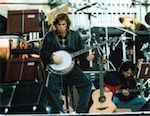 |
Also used in Crises, Amarok, Tubular Bells II
|
| CF Martin Style B Mandolin |
Used throughout the 70s and into the 80s, when he acquired the Mike Vanden F4-style mandolin. It appears in the videos for Portsmouth and William Tell Overture. |
Also used in Tubular Bells, Hergest Ridge
|
| Percussion instruments |
| Bodhrán |
18" bodhrán decorated with a St John Eagle from the Book of Kells. The bodhrán (pronounced as bough-rahn or bow-rahn) is an Irish frame drum made from goatskin, played with a beater called a tipper or cípín. A bodhrán was also used on Return To Ommadawn in 2016. |
Also used in Incantations, Five Miles Out, Amarok, Voyager, Return To Ommadawn
|
| Glockenspiel |
3 octave concert glockenspiel sold at piano auctions, December 2007. Not the one used on Tubular Bells and Hergest Ridge, but probably all albums after that. |
Also used in Tubular Bells 2003
|
| Paiste Symphonic Gong |
|
Also used in Incantations
|
| Marimba |
|
Also used in Incantations
|
| Premier Tubular Bells |
Brass tubular bells, as seen in the Boxed booklet photos. |
|
| Electric guitars |
| Fender Lap Steel |
Used on Ommadawn for the sliding sounds during On Horseback. |
|
| 1965 Fender Telecaster |
Neck date of November 1965 (s/n L807280). This guitar used to be owned by Marc Bolan. Mike added an extra pickup - made by Bill Lawrence - to it, with the help of his dad in their garden shed. Mike later took all the finish off the guitar, leaving it as bare wood. The guitar was offered through Chandler for £20,000 but wasn’t sold. It was then to be auctioned off by Bonhams on June 20, 2007 (Lot 391) with an estimate of £25,000 - 35,000. Next attempt was on January 15, 2008 (Lot 361, estimate £10,000 - 15,000). The last attempt was made on December 16, 2009 (Lot 277, estimate £8,000 - 12,000). All attempts failed due to low bids and the guitar was withdrawn. It was sold in January 2010 by charity SANE to English guitarist Keith Smart. Video
                  
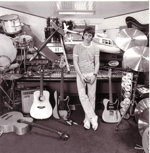 |
Mike told H & SR magazine in 1991 that this was "the main guitar on Ommadawn". He slightly contradicts himself a few sentences later, in saying that "the guitar sound on Ommadawn" was that of a Les Paul Junior through a Fender amp. Pictures of Mike at the time, as well as the 'All You Need is Love' documentary, suggest that Mike's go-to guitar was the SG/Les Paul Junior, not the Telecaster.
Also used in Tubular Bells, Five Miles Out, Amarok, Tubular Bells 2003
|
| 1962 Gibson Les Paul/SG Junior |
s/n 77138. This is one of the early models of SG which still had the Les Paul logo on the headstock. Mike bought this to replace the SG that was stolen from The Beacon. It became one of his most used guitars, being used extensively on albums and concerts throughout the 70s and 80s. He sold it through Chandler Guitars in February 2006. It was bought by a Swiss fan.
            
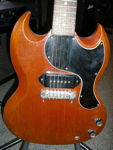 |
[?] The pictures in the Boxed booklet, taken after Ommadawn was recorded, suggest that Mike had only one SG-Les Paul at the time, with a retrofitted nickel-plated adjustable bridge. As the 62 SG still had a nickel-plated adjustable bridge when Mike sold it, that would point to the 63 SG, with a brass bridge, being a later acquisition and the 62 being the guitar used on Ommadawn.
Also used in QE2, Crises
|
| 1957 Gibson Les Paul TV model |
s/n 7 2031. This guitar was modified with a 2 octave fretboard. It was bought by a Scottish fan.
    
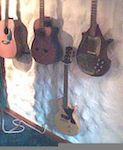 |
[?]
Also used in Incantations, Five Miles Out, Discovery, Amarok
|
| Nylon-string guitars |
| 1974 Jose Ramirez 1A Traditional |
s/n 7987
          
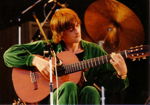 |
Also used in The Orchestral Tubular Bells, Hergest Ridge, Amarok, Voyager, Tubular Bells 2003, Light + Shade
|
| Steel-string acoustic guitars |
| 1973 Martin D-28-12 |
Serial number 335787. Sold to a German fan through Chandler Guitars in December 2007.
     
 |
Also used in Discovery, Amarok, Tubular Bells III
|
| Martin D-35 |
The exact year the guitar was built is unknown, but in the All You Need is Love documentary, it appears to be quite new. It's possible Mike bought it in 1974 after Terry sold his Dick Knight acoustic for him.

 |
|
| 1975 Zemaitis acoustic guitar |
Custom-built for Mike. Can be seen at Hard Rock Café Guangzhou: "1975 custom Zemaitis 6-string acoustic guitar with mother of pearl acorns and squirrels on neck and sound hole, owned by 'Tubular Bells' composer Mike Oldfield." |
|
| Bass guitars |
| 1960 Fender Precision Bass, blonde |
s/n 48986. Mike bought this shortly after recording Tubular Bells. He played it on the BBC Second House performance in 1974. The frets were later removed from it. Sold via Chandler Guitars in February 2006.
    
 |
Also used in Hergest Ridge, Incantations, QE2, Five Miles Out
|
| Gibson EB3 |
SG-shaped electric bass. |
|
| 1975 Zemaitis acoustic bass guitar |
Sold via Chandler Guitars in February 2008
    
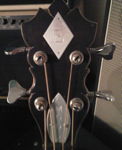 |
Also used in Incantations, Five Miles Out
|
| Amps |
| Fender Twin Reverb |
|
Also used in Incantations, Exposed, Discovery, Tubular Bells 2003, Return To Ommadawn
|
| Pianos |
| Steinway Model B |
Black Steinway baby grand, used at The Beacon. |
|
| Organs |
| Farfisa Professional Organ |
Return To Ommadawn used a Farfisa sotware emulation.

 |
Also used in Tubular Bells, Hergest Ridge, Incantations, Crises, Amarok, Tubular Bells II, Tubular Bells 2003, Return To Ommadawn
|
| Synthesisers |
| ARP 2600 |
Semi-modular analogue monophonic synthesiser. |
Also used in Incantations
|
| Solina string ensemble |
String synthesiser produced by the Dutch organ company Eminent and later rebadged by ARP. It owed much of its sound to its ensemble effect, created by running the sound through three LFO-modulated delay lines. |
Also used in Incantations, Platinum, QE2, Five Miles Out, Crises, Return To Ommadawn
|
| Other keyboards |
| Parrot Piano Accordion |
Chinese-made 30 key, 32 bass piano accordion. |
Also used in Tubular Bells 2003
|
| Wineha Spinet |
According to Les Penning, he and Mike travelled to Bradford in Mike's old Range Rover to buy this from Woods Early Music Shop. |
|
| Microphones |
| Neumann U87 |
Large diaphragm condenser microphone with selectable polar patterns. |
This was, according to Les Penning, the microphone used on the recorders (and likely many other instruments) on Ommadawn.
Also used in Incantations, Return To Ommadawn
|
| Loudspeakers |
| Westlake TM-1 |
|
Also used in Incantations, Platinum
|
| Studio effects and outboard |
| Urei 1176 Peak Limiter |
Mike originally borrowed some of these from the Manor Mobile, but later acquired his own. |
Also used in Incantations, Platinum, Tubular Bells II, Tubular Bells 2003
|
| Tape recorders |
| TEAC A3300 |
1/4" stereo tape recorder. For much of the 1970s, its input stage was used as part of the signal chain for Mike's distorted guitar sound. |
Also used in Incantations
|
| Ampex AG440C |
Used as a stereo mixdown machine in the Beacon. |
|
| Ampex MM1000 |
Multitrack tape recorder. A 16 track model was used for Tubular Bells and Hergest Ridge, while a 24 track from the Manor Mobile was used for Ommadawn. |
Also used in Tubular Bells, The Orchestral Tubular Bells
|
| Mixing desks |
| Helios 10 Channel Sidecar |
10 channel mixer, built by Helios for the Manor Mobile, but installed into the Beacon for the recording of Ommadawn. From the All You Need Is Love documentary, it seems that Mike used its preamps and EQs to help achieve his guitar (and no doubt other) sounds before recording to tape. |
|
| Neve Series 80 |
A customised Neve Series 80, built for the Manor Mobile, but lent to Mike to use at The Beacon. The exact model it was based on is unknown. |
Also used in The Orchestral Tubular Bells
|
|

